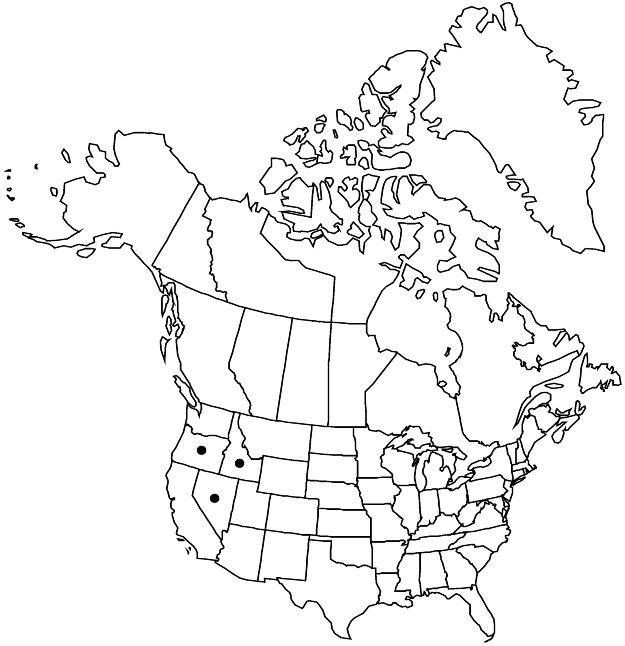Difference between revisions of "Mentzelia mollis"
Leafl. W. Bot. 4: 183. 1945.
FNA>Volume Importer |
FNA>Volume Importer |
||
| Line 54: | Line 54: | ||
|publication year=1945 | |publication year=1945 | ||
|special status=Endemic;Conservation concern | |special status=Endemic;Conservation concern | ||
| − | |source xml=https://jpend@bitbucket.org/aafc-mbb/fna-data-curation.git/src/ | + | |source xml=https://jpend@bitbucket.org/aafc-mbb/fna-data-curation.git/src/f50eec43f223ca0e34566be0b046453a0960e173/coarse_grained_fna_xml/V12/V12_733.xml |
|genus=Mentzelia | |genus=Mentzelia | ||
|section=Mentzelia sect. Trachyphytum | |section=Mentzelia sect. Trachyphytum | ||
Revision as of 19:55, 16 December 2019
Plants candelabra-form, 3–15(–20) cm. Basal leaves not persisting. Cauline leaves: petiole present (proximal leaves), absent (distal leaves); blade lanceolate to linear (proximal leaves), ovate to lanceolate (distal leaves), to 6 cm, margins dentate or entire (proximal leaves), entire (distal leaves). Bracts green, ovate to elliptic, 5–8.5 × 2–5 mm, width 2/5–3/5 length, not concealing capsule, margins entire. Flowers: sepals 3–5.5 mm; petals yellow to orange proximally, yellow distally, 8–12 mm, apex rounded; stamens 20+, 3–8 mm, filaments monomorphic, filiform, unlobed; styles 7–9 mm. Capsules cylindric or clavate, 5–22 × 2–4 mm, axillary curved to 45° at maturity, often prominently longitudinally ribbed. Seeds 15–25, in 2+ rows distal to mid fruit, tan, dark-mottled, irregularly polygonal, surface smooth to minutely tessellate under 10× magnification; recurved flap over hilum absent; seed coat cell outer periclinal wall flat to slightly convex. 2n = 36.
Phenology: Flowering Apr–Jul.
Habitat: Barren, sodic or calcic clay slopes and bluffs derived from volcanic ash.
Elevation: 800–1500 m.
Distribution

Idaho, Nev., Oreg.
Discussion
Mentzelia mollis is narrowly distributed in eastern Malheur County, Oregon, and western Owyhee County, Idaho, and disjunctly in the Black Rock Range of Humboldt County, Nevada. Recent phylogenetic studies support treatment of these disjunct populations as a single species (J. M. Brokaw and L. Hufford 2010b). In both ranges, M. mollis is predominantly limited to barren soils with high salinity. Mentzelia mollis is listed as endangered by the Oregon Department of Agriculture and is in the Center for Plant Conservation’s National Collection of Endangered Plants.
Selected References
None.